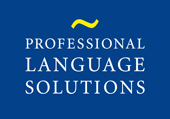I’m pretty sure it was Bill Bryson who wrote in one of his books that if an extra-terrestrial landed on earth, they’d think we all speak the same language. After all, we all make sounds that come out of our mouths and go into our ears so, on the phonetic surface, we do all speak the same way.
It is even possible that Homo Sapiens once spoke one language, way back in the old savannah days before we dispersed from Africa all over the world. But since writing shopping lists, novels or even articles for newsletters was not at the forefront of their pre-historic minds, written language has only recently been invented, thereby kick-starting history. We will probably never know if there once was a common language although that hasn’t stopped many linguists arguing about it and inventing languages for Hollywood films set in pre-history, from grunts in One Million Years B.C. (1966) to the more sophisticated (but still monosyllabic) language of Alpha (2018).
We now also know that language and communication is not just a human ability and have learnt that even Acacia trees in the African savannah communicate to warn each other of oncoming giraffes. But I digress.
On a more scientific level, the American linguist, philosopher etc Noam Chomsky proposed that ‘the human brain contains an innate mental grammar that helps humans acquire language’ and that ‘a certain set of structural rules are innate to humans’ (to quote the highly scientific Wikipedia). And there are of course a lot of linguistic elements languages seem to have in common. For example, all languages in the world:
- have a hierarchical order
- put the topic first
- use grammar words, for example, nouns v thing-words – see abstract nouns which behave grammatically like thing-words: two big trees/two big problems
- use some form of prefixes and suffixes (some even infixes)
- have the concept of this and that (and some even more than that)

Guy Deutscher argues in his book ‘The Unfolding of Language’ that the three main ingredients for change in language are:
- Economy: saving energy by, for example, pronouncing as little as you can get away with (something the Danes know all about!) so words are constantly being eroded.
- Expressiveness: create a greater effect or simply make some sense if words have been eroded too much as in the Latin word for today ‘hodie’ (itself originally a compound of hōc and diē) developed into the French ‘hui’ which then had to be amplified to aujourd’hui – literally ‘on the day of today’.
- Analogy: desire for order and the brain’s ability to create links between different domains, so the Spanish word ‘tengo’ as in ‘tengo 2 hijos’ (I have 2 children) meant ‘I hold’ and, by extension, ‘I have’. The craving for order also meant ‘kine’ became cows and ‘peasen’ peas).
All these changes have led to the very many language varieties we have today. As teachers, we often stress the differences between our students’ languages and the language we teach rather than homing in on the similarities. We all too often see our language as a monolithic structure that has unchanging rules students need to learn in order to speak grammatically correct Russian, Japanese etc with the correct pronunciation using the correct words. The idea that there is one correct version and everything else is a mistake puts not only students but also teachers under a lot of pressure. I would suggest that we should not be too hung up on accuracy and instead concentrate on giving our students the tools to communicate effectively and efficiently. If Acacia trees can do it, so can we.
About the author:
 |
Gerett is a polyglot linguist and educator, with over 30 years' experience in the language training industry. |
PLS are a language training provider based in London who are currently providing online lessons to a variety of corporate and government clients. Get in touch today to discover how we can help you or your colleagues reach your language learning goals.


